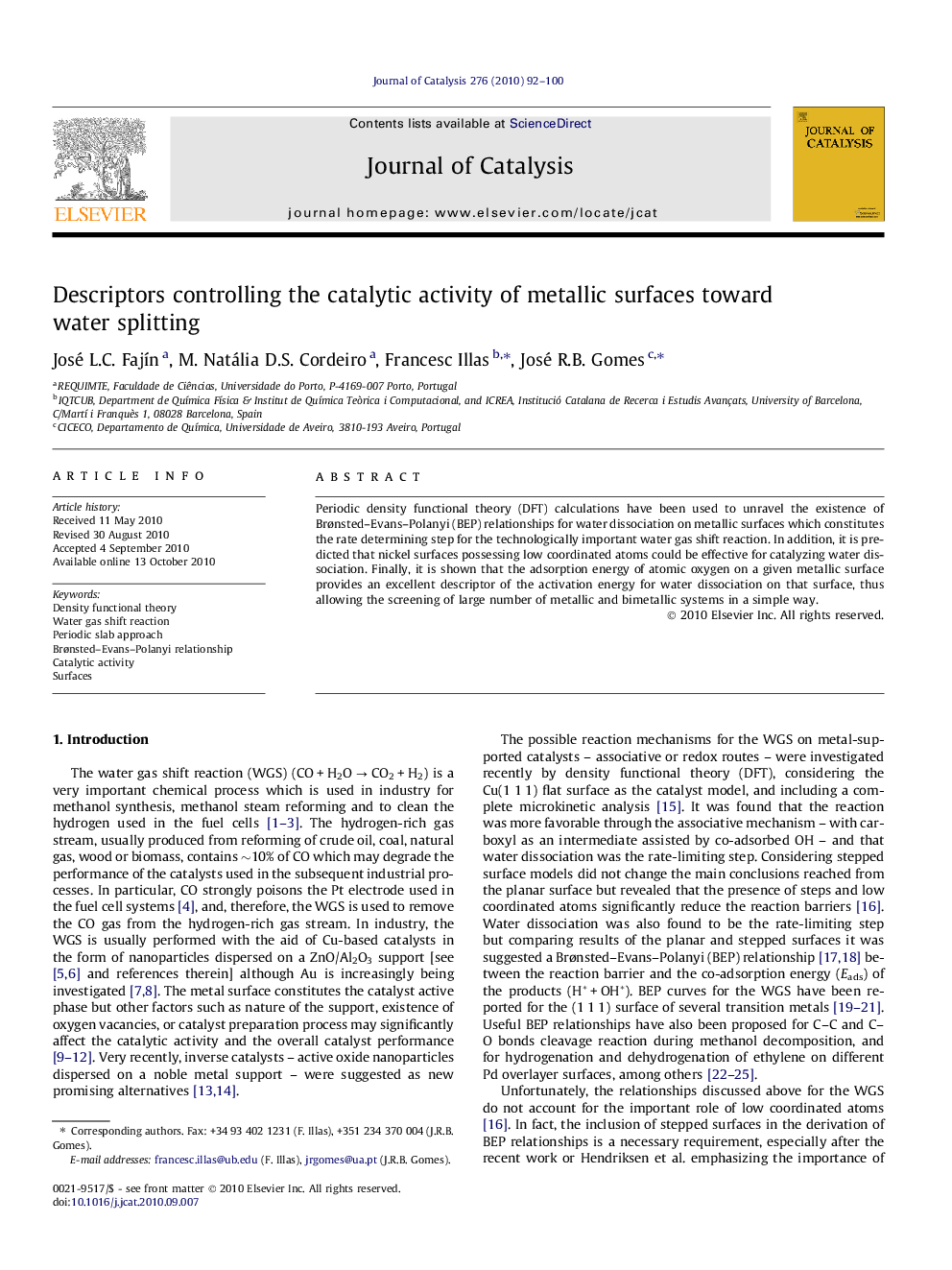| کد مقاله | کد نشریه | سال انتشار | مقاله انگلیسی | نسخه تمام متن |
|---|---|---|---|---|
| 62059 | 47619 | 2010 | 9 صفحه PDF | دانلود رایگان |

Periodic density functional theory (DFT) calculations have been used to unravel the existence of Brønsted–Evans–Polanyi (BEP) relationships for water dissociation on metallic surfaces which constitutes the rate determining step for the technologically important water gas shift reaction. In addition, it is predicted that nickel surfaces possessing low coordinated atoms could be effective for catalyzing water dissociation. Finally, it is shown that the adsorption energy of atomic oxygen on a given metallic surface provides an excellent descriptor of the activation energy for water dissociation on that surface, thus allowing the screening of large number of metallic and bimetallic systems in a simple way.
Water dissociation on regular, stepped and folded transition metal surfaces follows a BEP relationship. In addition, the adsorption energy of atomic oxygen on a given metallic surface provides an excellent descriptor of the activation energy thus allowing the screening of a large number of metallic and bimetallic systems in a simple way.Figure optionsDownload high-quality image (59 K)Download as PowerPoint slide
Journal: Journal of Catalysis - Volume 276, Issue 1, 19 November 2010, Pages 92–100